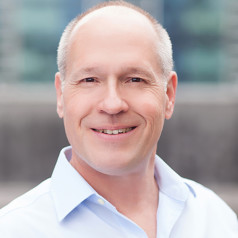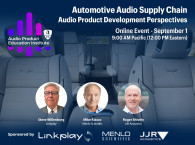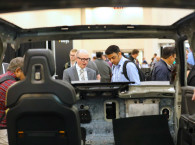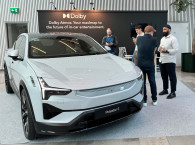More money is being spent on home audio now and that also extends to the car. So, more importance is put on audio by the consumer. From the beginning, branded audio empirically implied higher audio quality. The brand partnerships are a way for home audio companies to diversify revenue sources, and for automakers to use brands known for premium audio to sway a consumer’s buying decision. The balancing act can still exist when an OEM sees customer awareness the same as acceptance for a brand. Branded audio has always required attention to content and quality to create a significant difference in trim levels.
There are more tiers of brand levels to premium audio now. It’s not the traditional formula of 15% of audio systems in a carmaker will be brand. There are now multiple tiers, and those tiers are getting larger within themselves. For luxury systems, they need to be loaded with more features than ever before. And, although there are more audio brands in OEM carmakers around the world, the older model of full system and component offerings from an audio brand company is disappearing. The trend is to have different suppliers for the traditional head-units, contemporary cockpit domain controllers, amplifiers, loudspeakers, and the brand separately.

In addition to the trend of separate Tier One suppliers, there is still an ebb and flow of in-house development at carmakers and the reliance on supplier and independent consulting development. Some new electric car companies have started in-house In-Vehicle Infotainment (IVI) development, even though they still use external consultants for DSP integration and external hardware suppliers. Classic North American automotive companies are going in the direction of being in-house, with some external blueprint projects, but no outside development. It doesn’t always go perfectly, though.
Europe has done this successfully. The domain controllers are mostly being handled externally. It takes an enormous number of resources for software development (lower-level design instead of higher-level engineering that would scrutinize a supplier). The European processes are structurally set up to handle it internally. For functional specifications, it is usually better to have the supplier cover it. For example, if a large automaker goes with an open-sourced audio platform, then they need to go to a Tier One that has a better setup. The US carmakers with a large presence in Europe have benefited with the synergy of processes and are more successful at internal integration. Asian OEMs are adopting both development structures and approaches. As with their North American and European counterparts, the larger size and global presence can benefit the internal development.
Yet some have no vertical organization by design, officially, but they foster more and more cross group communication. They encourage change to come from the grassroots. They see this as a way to eventually change the organization in a more organic way.
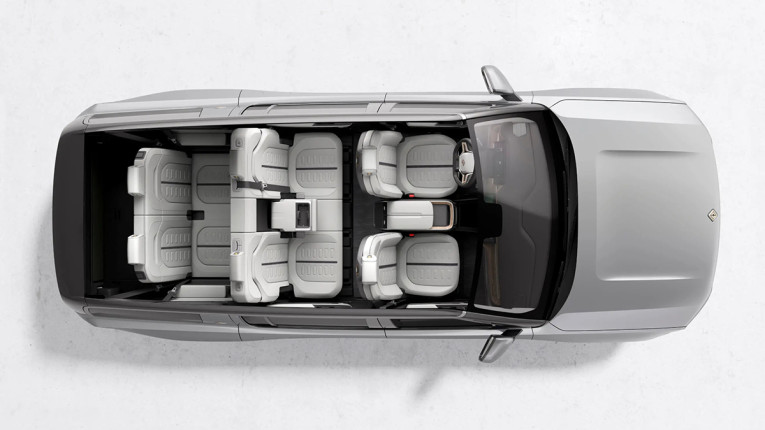
IVI products are cost intensive but also provide high value and the profit to go with it. However, large OEMs such as this will still go to Tier Ones for development of amplifiers and tuners. Carmakers of this size can either have members of the team around the globe, placed where the expertise resides, or they can have centers of excellence and the expertise is gathered there. The downside of having everything in-house for them, no matter the structure, is that it can be slow to turn the company and accelerate technology.
Independent companies still have a role to play. One such company, DSP Concepts, says it has seen a “surge in demand from automotive OEMs looking to innovate the in-cabin sound experience; adding voice control has also been increasingly popular.” They have made substantial investments to enable automakers to design, develop, and deploy new audio experiences faster. For example, Mercedes-Benz recently adopted DSP Concepts' Audio Weaver in its latest S-Class.

Simulation Trends in OEMs
In the Global OEM market, with the reduction of prototype numbers to control development cost, the need for virtual development is clear. Only recently has audio system and vehicle acoustic simulation begun. Until then, crash safety and durability were the biggest areas.
Yet, those beginnings have helped pave the way for efficient acoustic simulation model building. Meshes created for crash, durability, and noise can be re-purposed for acoustic meshes, saving the man-hours required for creating them from raw CAD, whether that is done internally for OEMs, Tier-Ones, or by independent consulting companies.
A lot of simulation, tuning, and auralization are being done outside of the lab space now. Virtual models on concept cars before they exist are being used for virtual tuning. Those tunings are like using the physical and mechanical simulation for learning a car’s behavior. Exploring tuning options helps the sound engineer develop an understanding of the acoustic space and loudspeaker system to find a path to the optimal tuning.
For an OEM audio engineer, it's no longer about new loudspeaker materials or the ultimate loudspeakers. Simulation helps the audio engineer with the integration of the system’s loudspeakers into the vehicle and maintaining the integrity of the loudspeaker’s design quality. Using virtual product development with acoustic simulation is the key.
Competition is greater. Development has less time and money for physical prototypes. What’s left over after the battery, needs to be light, strong, crash-worthy, and the smallest volume possible. The goal of simulations has been to be only as accurate as is necessary to make good design decisions. The tools are improving, the expertise is growing, the hands-on knowledge of vehicle acoustics and dynamics is established and being passed on to the next generation. It is now possible for the accuracy of simulations to be even greater and more precise. Simulations that would have been considered too detailed and requiring precise correlation worthy of high-level academic exercises, or NASA, are becoming more and more common. Simulation teams now want, and can reach out for, an extremely precise and accurate acoustic and mechanical version of the car they are redesigning, the day after it is released for production.

This article was originally published in The Audio Voice newsletter, June 17, 2021 (#332)


